The Art of Eating, Haida Ladle Carving
The ARTShops program is a collaboration between The CIRI Foundation, the Alaska State Council on the Arts and the Alaska Native Heritage Center. Established in 2016, ARTShops support emerging Alaska Native arts leaders to develop their skills in leading community-based arts programs.
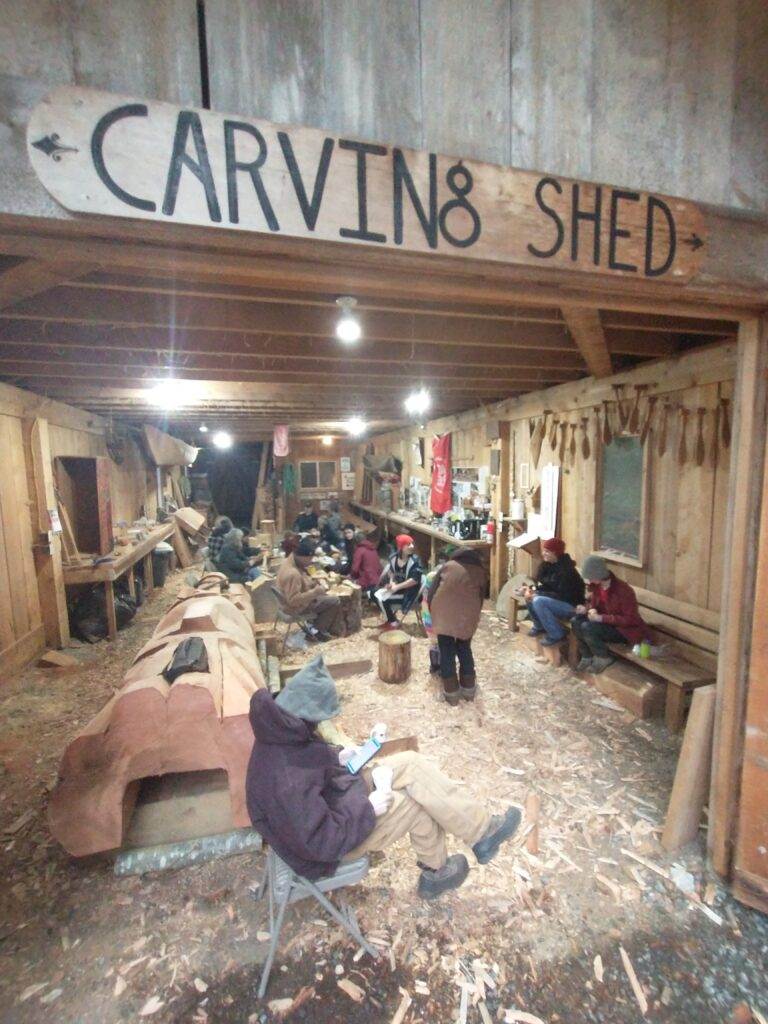
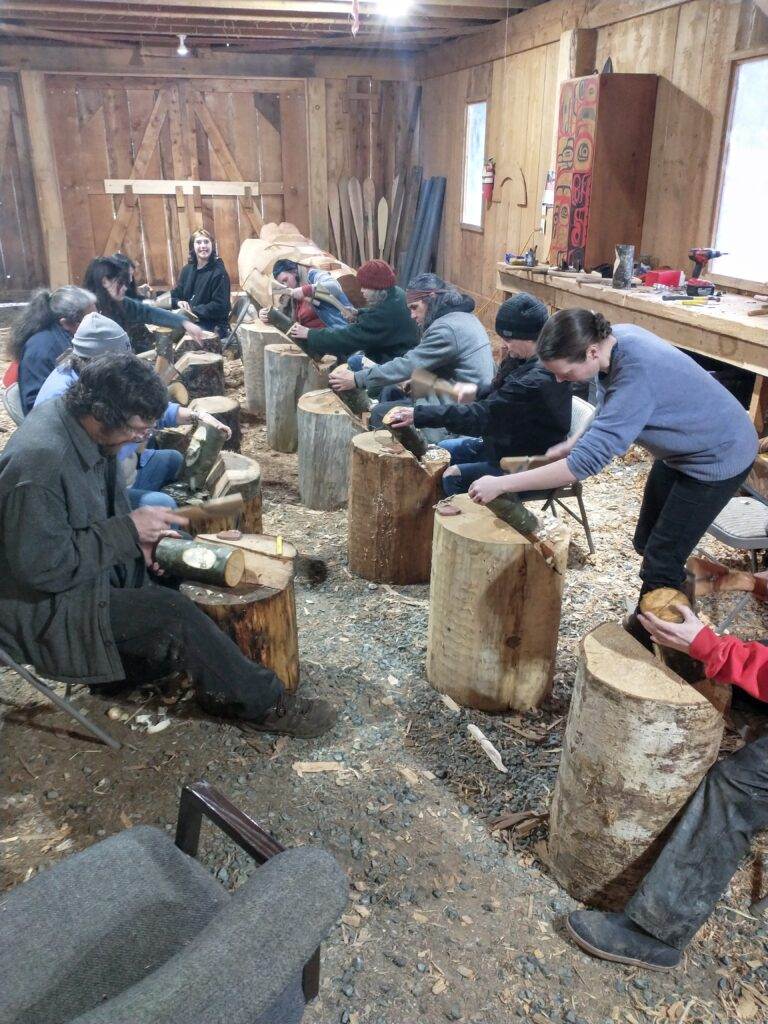
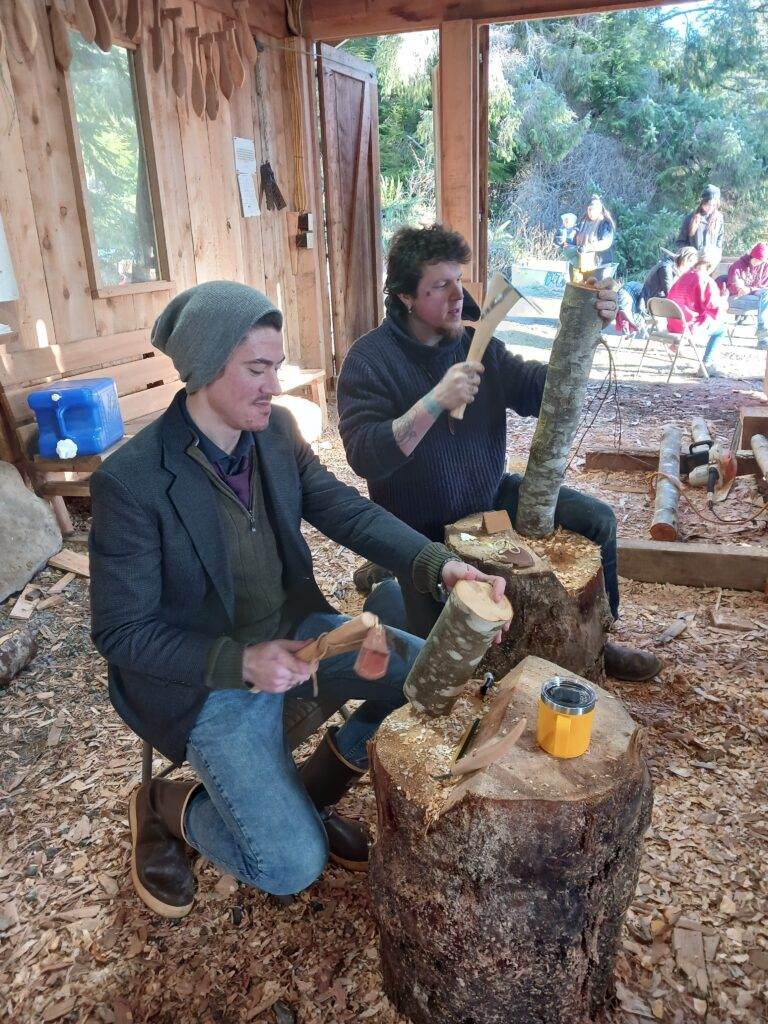
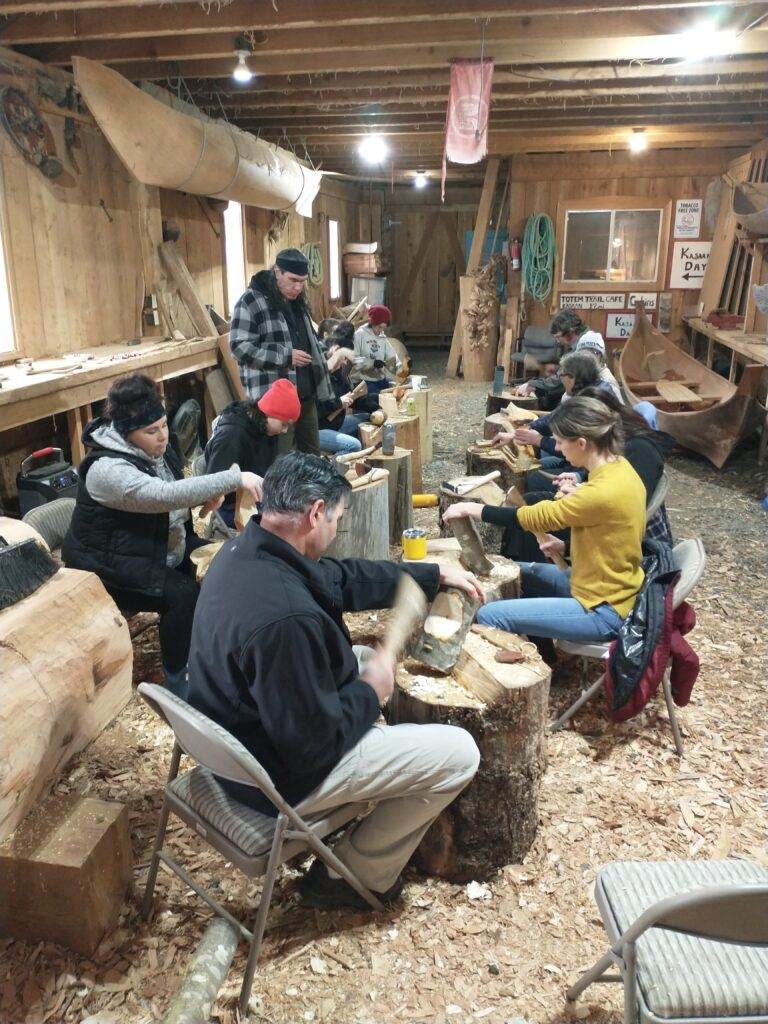
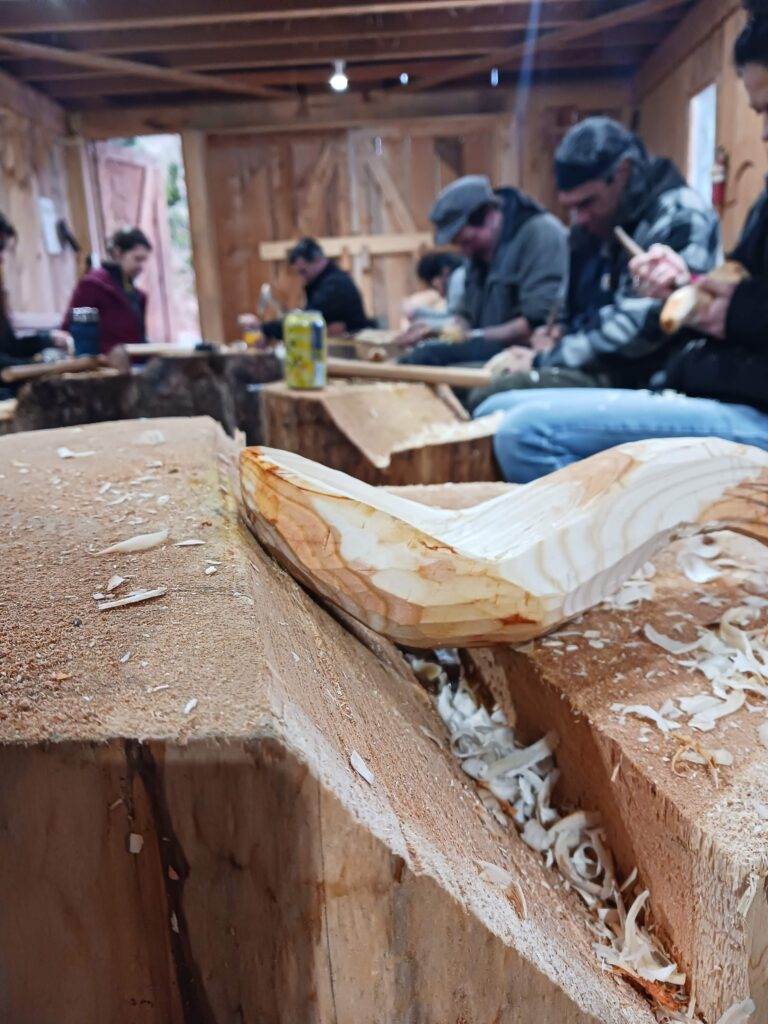
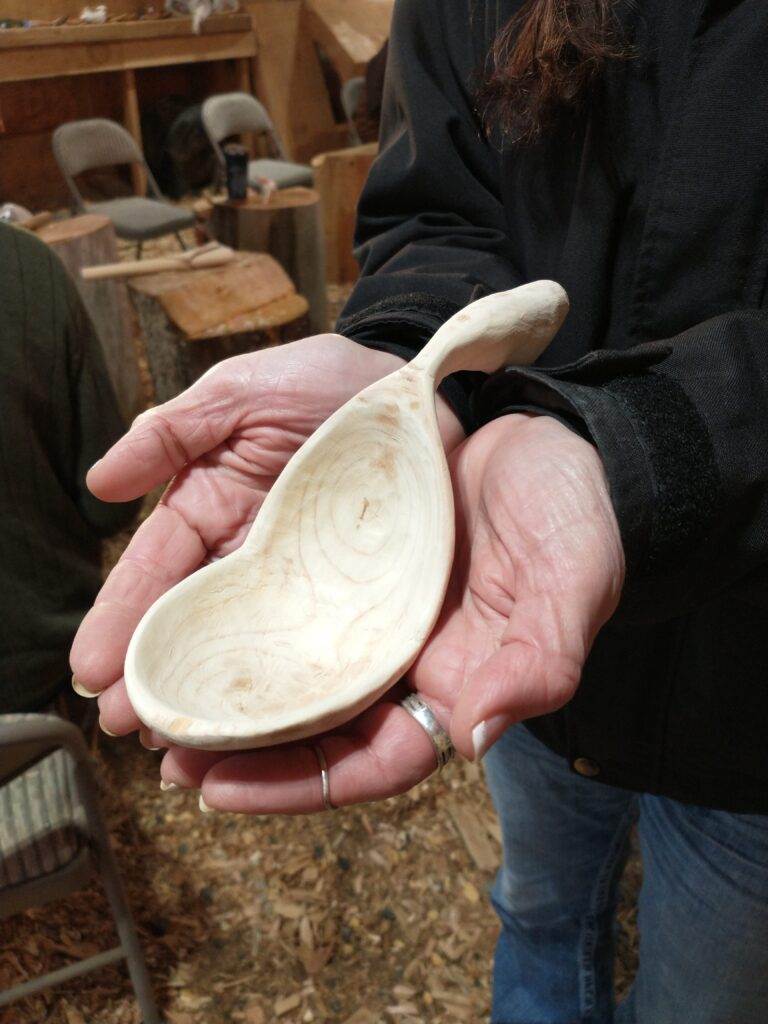
The Gaahlaand Náay Carving Shed here in Kasaan has been the cultural center of our community since it was built in 2010. Due to funding difficulties and COVID restrictions it has been mostly unused in the past four years, but support from the CIRI Foundation and the Alaska State Council on the Arts helped us to breathe new life into our carving shed in the form of this ladle class. Over 4 separate weekends in January and after almost 20 hours of hard work, 13 students of all ages and skill levels learned the process of carving wooden ladles from tree to bowl.
The carved ladle project is a great introductory carving project for all students, allowing them to learn the process of using two of the most common carving tools in Southeast Alaska, the hook knife and the adze. I think there is something beautiful in the simplicity of a project like the ladle. While it doesn’t seem like much, and maybe it’s not as flashy as other parts of our culture, the spoon is inseparable from our people. As long as we’ve had soup we’ve had spoons to serve it, and it can become a common thread between many different cultures. Its shape is based on the goat horn spoons originally made by our people, and it has a elegant nature that defies its servitude. After the hard times that we’ve experienced even in this remote community associated with COVID, it was beautiful to be a part of a community event like this, bringing us together in a way that we can all enjoy and relate to.
When I was younger, I apprenticed under a Tsimshian elder who told me of the parties held in his youth.
At the end of the winter when it was at its harshest and coldest, everyone in the village would come
together and throw what they called a hard times party. He said it was similar to an end of winter
potlatch. They cooked all the food they had left and shared it with each other, along with entertaining
stories and dances, and everyone forgot how cold it was or how long the winter had been.
At the end of our class, we all got together and did the same. We shared stories of our learning experiences, as well as our experiences in life. We brought food to share, and served each other with the spoons that we had made together. I can’t think of a better way to shake off years of disconnection and hardship, than a party like that. It’s my hope that this class was not a one time thing, but that it might spur future hard times parties and classes where we can get together and share the experiences that make us a
community.
